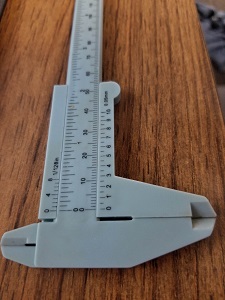
Photo credit: jb
Just because there can be some confusion over the PIA, I am writing this particular article to (hopefully) help reduce the confusion. In an earlier article – Social Security’s PIA – What is this? – we worked through how PIA is calculated, I’m just giving it another treatment here, to help clarify.
Primary Insurance Amount
As you know from the other article, the PIA is based upon your Average Indexed Monthly Earnings (AIME), which is the average of your highest 35 years of earnings, indexed for inflation, and expressed as a monthly figure. The AIME then has bend points applied in the year that you reach age 62, in order to calculate the Primary Insurance Amount (PIA).
This PIA is equal to the projected benefit amount that you would receive if you started benefits upon reaching your Full Retirement Age (FRA). The actual amount that you receive if you take your benefit at FRA would likely be different due to Cost of Living Adjustments (COLAs) that would be applied between age 62 and FRA – but the PIA is not changed.
The only way that the PIA is adjusted from the original calculation is if the projection has changed. The projection made at your age 62 assumes that you continue working, earning the same amount as your last reported year, and as such your AIME is not changed during that period. If you happen to have already worked your 35 years by that point and do not work after age 62, your PIA will be pretty close. But your PIA will be adjusted if you work from age 62 to FRA and your earnings are either 1) greater than one of the other 35 years used in your AIME at age 62; or 2) being added to the AIME calculation because you didn’t have a full 35 years of earnings when the PIA was calculated at age 62.
Likewise, if you do not work from age 62 to FRA or you work for lower wages than your AIME projection assumed (and you had fewer than 35 years of earnings as of age 62), your PIA at FRA could actually be a bit lower than the original projection. This might happen because your original PIA calculation depended on your future earnings being equal to your most recently-reported earnings, replacing lower or zero earnings years in your current history.
Calculating Benefits
When your actual benefits are calculated, your PIA is the starting point. Then all COLAs are applied, if you’re older than age 62. After this, your age when you initiated benefits is taken into account – if it was before FRA, there will be a reduction; if after FRA, an increase. This increase or decrease is applied against the COLA-adjusted-PIA, resulting in your monthly benefit amount. That’s all there is to it.


 Sterling Raskie, MSFS, CFP®, ChFC®
Sterling Raskie, MSFS, CFP®, ChFC® The latest in our Owner’s Manual series, A 401(k) Owner’s Manual, was published in January 2020 and is available on
The latest in our Owner’s Manual series, A 401(k) Owner’s Manual, was published in January 2020 and is available on  A Medicare Owner’s Manual, is updated with 2020 facts and figures. This manual is available on
A Medicare Owner’s Manual, is updated with 2020 facts and figures. This manual is available on  Social Security for the Suddenly Single can be found on Amazon at
Social Security for the Suddenly Single can be found on Amazon at  Sterling’s first book, Lose Weight Save Money, can be
Sterling’s first book, Lose Weight Save Money, can be  An IRA Owner’s Manual, 2nd Edition is available for purchase on Amazon. Click the link to choose the
An IRA Owner’s Manual, 2nd Edition is available for purchase on Amazon. Click the link to choose the  Jim’s book – A Social Security Owner’s Manual, is now available on Amazon. Click this link for the
Jim’s book – A Social Security Owner’s Manual, is now available on Amazon. Click this link for the  And if you’ve come here to learn about queuing waterfowl, I apologize for the confusion. You may want to discuss your question with Lester, my loyal watchduck and self-proclaimed “advisor’s advisor”.
And if you’ve come here to learn about queuing waterfowl, I apologize for the confusion. You may want to discuss your question with Lester, my loyal watchduck and self-proclaimed “advisor’s advisor”.